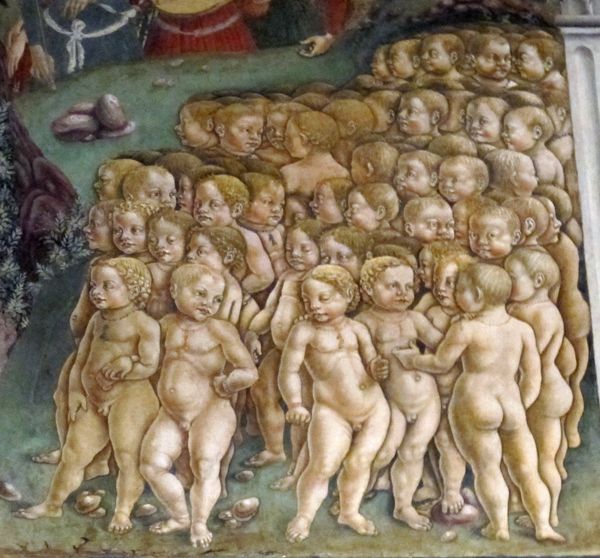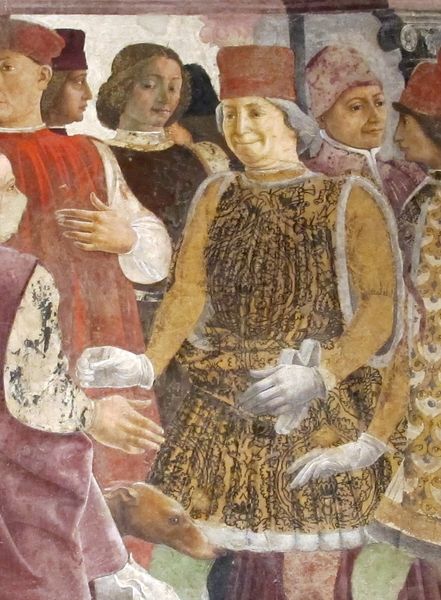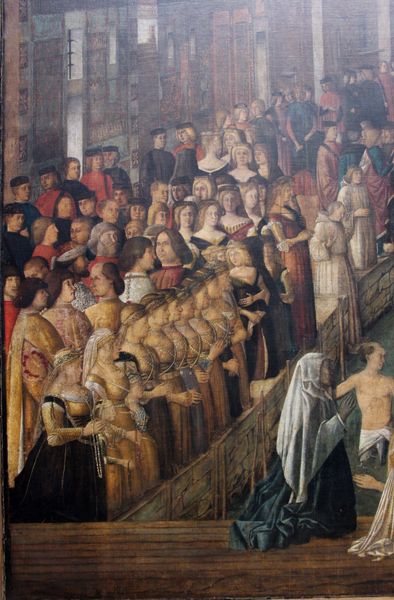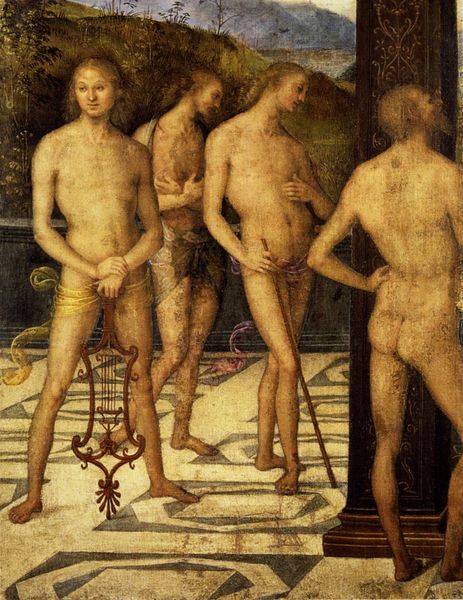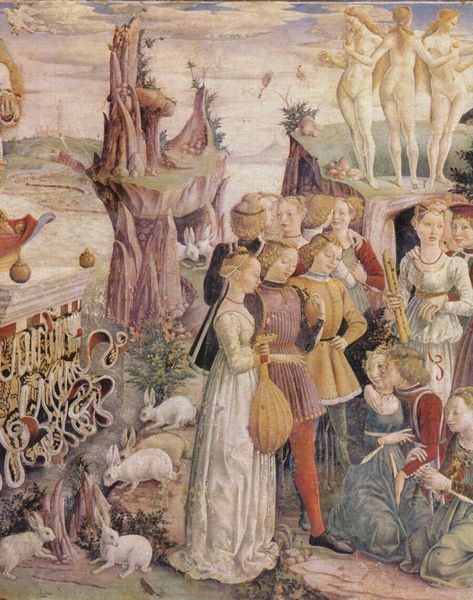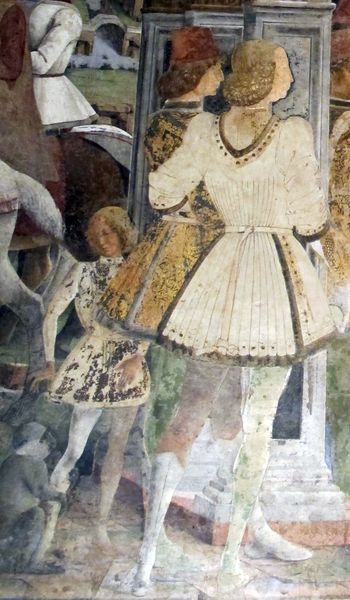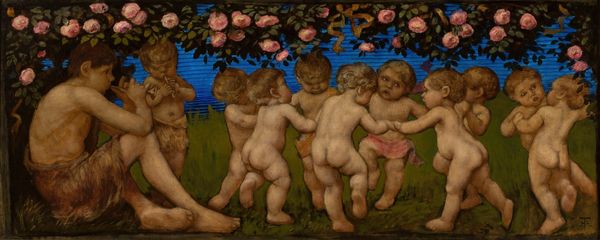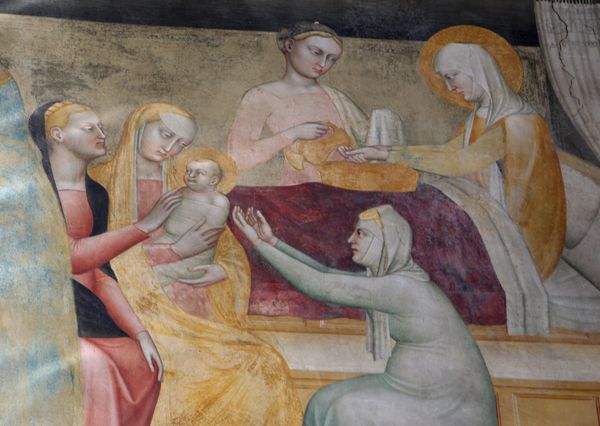
painting, oil-paint
#
portrait
#
painting
#
oil-paint
#
figuration
#
oil painting
#
group-portraits
#
genre-painting
#
history-painting
#
italian-renaissance
Copyright: Public domain
Curator: Looking at this cropped section of Gentile Bellini's "Miracle of the Cross at the Bridge of San Lorenzo" from around 1500, executed in oil, my immediate thought is one of incredible order. The figures are arranged almost like a pattern. Editor: Order, yes, but it strikes me as more than just aesthetic. Look at how Bellini constructs these gendered power dynamics. Curator: You mean how the women are so elaborately adorned, their dresses suggesting status but their gazes all directed the same way, giving an impression of a collective identity. Editor: Exactly. They are literally in line with each other. How much agency do they truly wield, dressed as they are in finery meant to represent the family or husbands from which they came? Are they individuals or a carefully constructed reflection of Venice's patrician society? Curator: What about the context? During the Renaissance in Venice, sumptuary laws dictated attire based on social standing. Bellini paints with remarkable accuracy and attention to detail; notice the intricate pearl details, the metal woven brocade of their sleeves and bustiers...they are walking symbols of wealth and devotion. Editor: And aren't visual symbols powerful? In this image, these wealthy families demonstrate both wealth and civic duty; they’re upholding social hierarchies and perhaps reinforcing the marginalization of those not within the fold. Their sameness feels like a visual enforcement of homogeneity. Curator: Bellini was a master portraitist, sought after for capturing the nuances of Venetian society. Do you think he saw the social dynamics you're describing or was simply recording what he observed? Editor: Perhaps it was both? Bellini likely understood the complexities. Consider this a coded critique, or maybe even an affirmation. He presents a cross-section of Venice at a moment of presumed divine intervention. By depicting this concentration of status he may, at once, uphold their position and question the role it has in reinforcing oppression. Curator: An interesting view to consider what messages persist through changing times. Thank you. Editor: And thank you for offering your knowledge of art history; that's important to recognize when discussing class dynamics in any century.
Comments
No comments
Be the first to comment and join the conversation on the ultimate creative platform.
